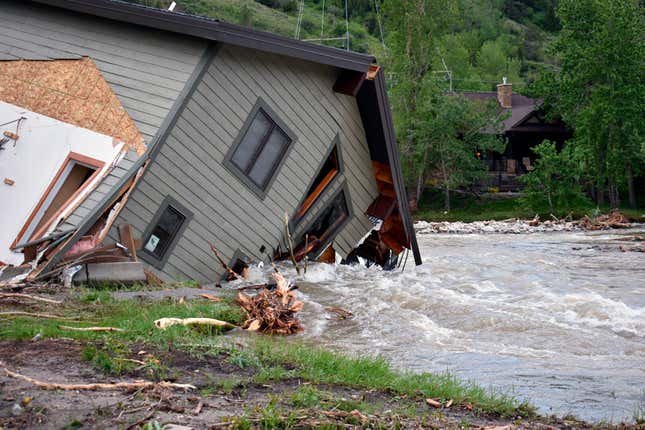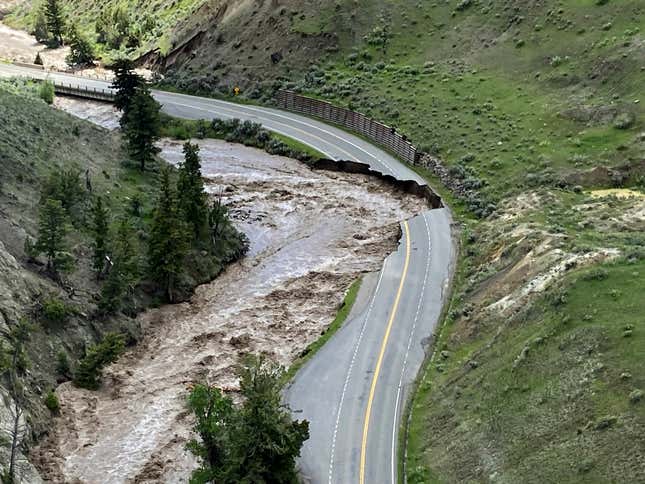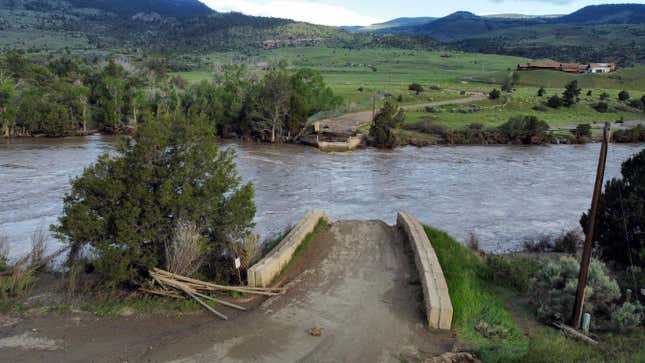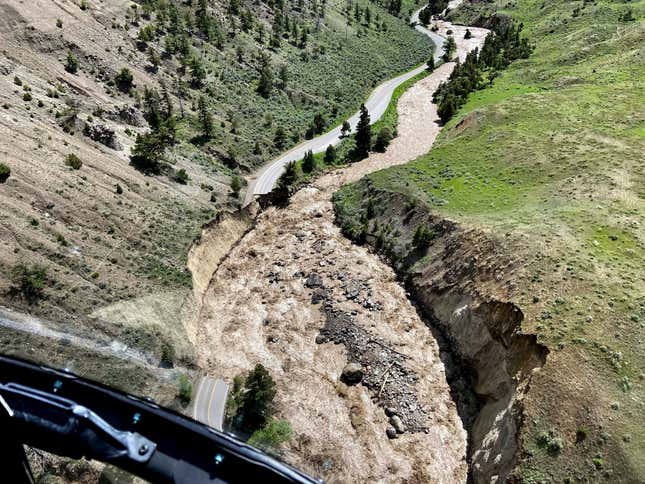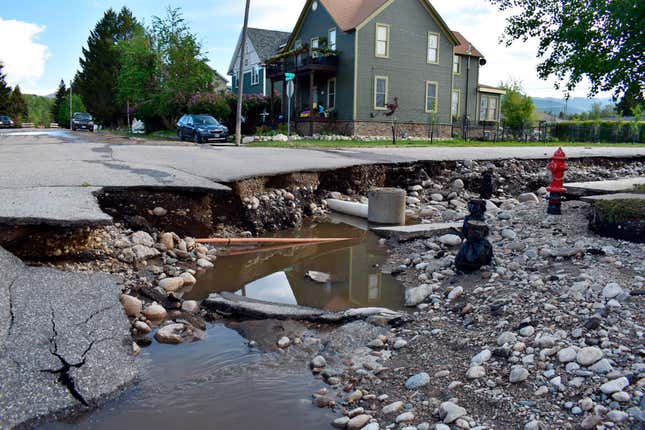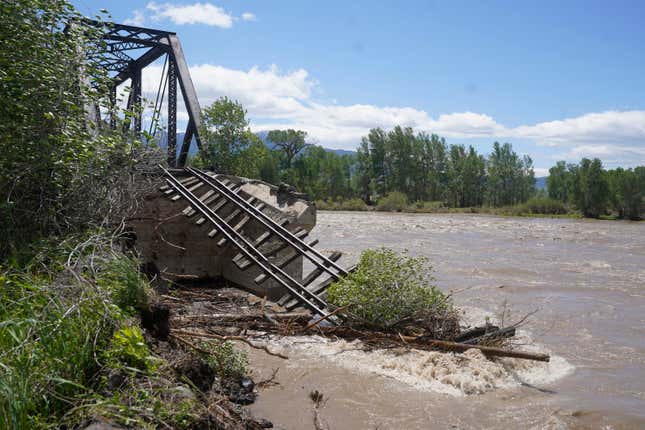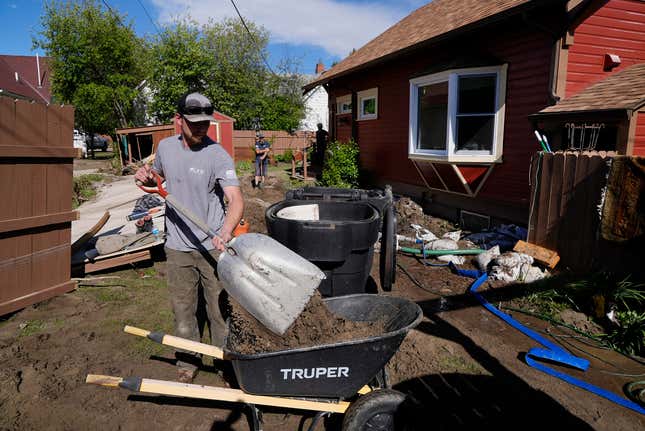Yellowstone National Park is currently closed to all visitors and Montana has declared a statewide disaster because of historic, widespread flooding. Roads, homes, bridges, the electric grid, and drinking water infrastructure have all been damaged, according to the a press release from Montana Governor Greg Gianforte (who seems to be missing). So far, no flood-related deaths or injuries have been reported, but thousands of people have been evacuated from both inside and outside the park.
Yellowstone is located mostly in Wyoming, but parts of the park also lie in Idaho and Montana. The northern, Montana side of the park has been the most affected by the floods. On Tuesday evening, the National Park Service announced that the entire park will be closed at least through June 19 and that heavily damaged northern sections will be probably be shuttered for the rest of the usually busy summer season.
What happened in Yellowstone?
Over the weekend, the park and its surrounding area received about 2 to 3 inches of rain, and unseasonably warm temperatures melted more than 5 inches of snow, explained Yellowstone’s park superintendent, Cam Sholly, in a Tuesday news conference.
This precipitation and snowmelt caused major flooding in the northern part of Yellowstone National Park, with the most serious impacts in the northwest corner between Gardiner and Cook City.
The average number of park visitors within Yellowstone at any given time in the month of June ranges between 15,000 and 20,000 people, said Sholly. He estimated that well over 10,000 people were safely evacuated from within the park during the flooding, and thousands more from Gardiner.
Raging water rendered at least 5 miles of road completely impassable and “substantially impacted” other roads in the park, he said. Major bridges completely disappeared, and hundreds of smaller bridges will need to be assessed for damage. Trails were covered by landslides and debris.
“This is not just one section. This is not going to be an easy rebuild,” Sholly emphasized.
Flooding caused other immediately apparent damage within and nearby the park. In the town of Gardiner, Montana near Yellowstone’s north entrance, floodwaters washed away an entire apartment building for park staff, which was home to six employee families. The superintendent described the structure floating along the Yellowstone River for about 5 miles before stopping.
What happens now?
Less obvious impacts will take time to fully assess and understand, Sholly added. Even in the relatively unharmed portions of the park, for instance, the wastewater management system might be damaged. Park managers are planning for more extensive surveys next week when the water has completely gone down.
As Sholly described it, the flooding is undoubtedly historic for the region. “I’ve heard this is a thousand-year event—whatever that means these days. They seem to be happening more and more frequently. So I don’t know exactly what context to put it in historically.”
And though he seemed unable to offer an exact parallel from the past, Sholly did say that Sunday night’s flow rating for the Yellowstone River reached 51,000 cubic feet per second—much higher than previous high flow levels of 31,000 cfs recorded in the 1990s.
The last time Yellowstone was shut down for a natural disaster was in 1988 for widespread wildfires. More recently, the park was closed for two months early in the covid-19 pandemic, and has previously briefly shuttered during government shutdowns, said Sholly. But “I don’t believe we’ve ever closed the park [before] for flooding,” he added.
Although the current flood damage cannot be directly attributed to climate change at this time, previous research has shown that human-caused climate change is increasing the risk and severity of heavy precipitation events as well as associated landslides.
Further, the warm temperatures that triggered mass snowmelt in the region are becoming more common as atmospheric greenhouse gas levels increase. Over the past 100 years, Montana has warmed by an average of about 2 degrees Fahrenheit, according to the EPA. Heatwaves are also becoming more frequent, and snowmelt is happening earlier in the spring.
For now, in Yellowstone and the surrounding area, the flood waters have partially receded, laying bare the the extensive destruction. Clean-up efforts are already underway, but the water level is still high and the trouble is far from over. There remains about a foot of snow on the ground throughout the park, Sholly warned, and warm temperatures coupled with more rain could trigger another major flooding event in the coming days.
